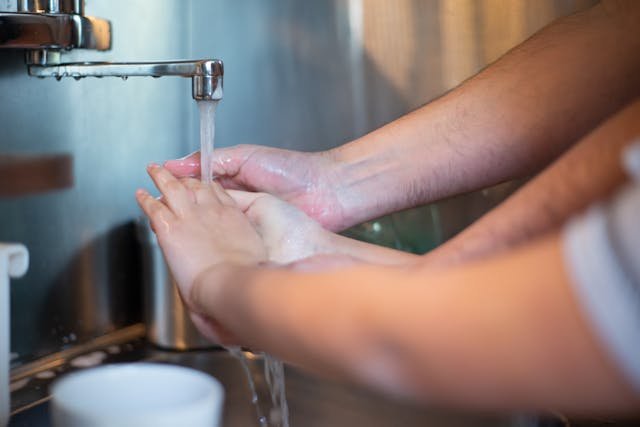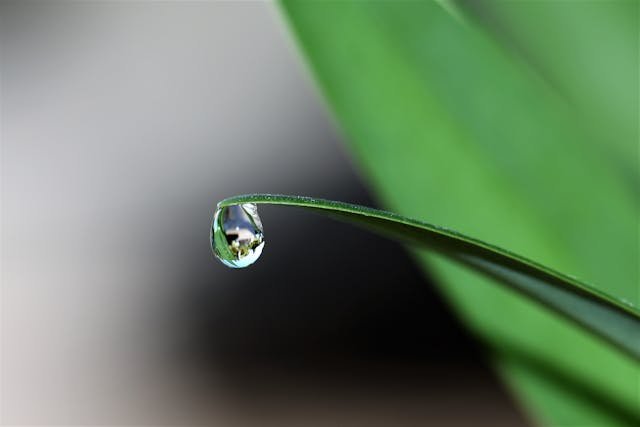Turning on your tap in Chicago? Wondering what’s really behind that refreshing stream? For a city that sources its drinking water from Lake Michigan, Chicago has been praised for its robust water treatment systems. Yet, there are concerns about contaminants, aging infrastructure, and water safety.
This article dives deep into the topic, addressing key questions like “Is Chicago tap water safe to drink?”, potential risks, and what you can do to ensure your water is clean and safe. From testing processes to common issues like lead and PFAS, we’ve got all the information you need.

Understanding Chicago’s Water Source and Treatment
To truly appreciate the safety of Chicago’s tap water, it’s important to understand where it comes from and how it’s processed.
Lake Michigan as the Source
Chicago gets its drinking water from one of the largest freshwater bodies in the world, Lake Michigan. This natural resource supplies water to millions of residents in the city and surrounding suburbs. Its sheer size and constant movement make it a reliable, refreshing source.
Treatment Process
The city employs a rigorous treatment process to turn lake water into safe drinking water. It involves:
- Filtration to remove large debris and particles.
- Chemical disinfection using chlorine to eliminate harmful bacteria and pathogens.
- Sediment removal to purify the water further and ensure safety.
Treatment facilities are governed by stringent guidelines to ensure compliance with EPA (Environmental Protection Agency) and Illinois state standards.
Regulatory Oversight
The EPA provides clear mandates on water quality, enforcing standards for over 90 contaminants. Chicago’s water treatment facilities conduct daily testing and sampling to ensure compliance with these health-based standards.
Fun fact: Chicago’s water supply system has received accolades in the past for its efficient management and efforts in water quality assurance.
What the Data Says: Chicago Water Quality Reports
The best way to gauge water safety is to look at the numbers. Chicago water quality reports provide transparency about what’s in your tap water.
Importance of Water Quality Reports
Every year, Chicago publishes a detailed water quality report. This report highlights the testing results and offers a breakdown of detected contaminants against EPA limits. Residents can find these reports on the City of Chicago’s official website.
Key Parameters Tested
Water quality reports test for various potential contaminants, including:
- Lead: A common concern due to aging pipes.
- Bacteria: Ensuring the absence of harmful pathogens.
- Disinfection byproducts: These compounds form when chlorine reacts with organic matter during treatment.
- PFAS (Per- and Polyfluoroalkyl Substances): Often referred to as “forever chemicals” due to their persistence in the environment.
Recent Findings
According to recent Chicago water quality reports, most parameters consistently meet or exceed EPA standards. However, there’s an ongoing discussion about lead levels, particularly in homes with old lead service lines, even though levels are generally within federal limits.
For a deeper look at the numbers, visit City of Chicago Water Quality Reports.
Potential Concerns and Known Issues
Despite Chicago’s rigorous treatment systems, there are known issues with its water delivery infrastructure that may impact safety.
Lead Service Lines
Chicago used lead pipes for water delivery until 1986, and many homes still have these older pipes. Lead can leach into drinking water, especially after construction or water main repairs disturb the lines. While water treatment adds corrosion inhibitors to minimize this, the presence of lead in service lines is a potential risk.
PFAS in Chicago Water
PFAS are synthetic chemicals used in industrial applications and consumer products. They can persist in water systems and accumulate over time. While Chicago’s water typically doesn’t exceed the EPA’s advisory levels, PFAS have emerged as a growing concern.
Disinfection Byproducts
When chlorine used for disinfection reacts with organic matter in the water, it can form byproducts like trihalomethanes (THMs). These are tightly regulated, and Chicago’s testing shows compliance with EPA limits.
Other Contaminants
Contaminants like copper, nitrates, and certain industrial chemicals are occasionally flagged in quality reports but generally remain below dangerous thresholds.
How to Ensure Your Tap Water is Safe
While Chicago’s tap water is regularly tested and treated, taking a few extra precautions never hurts.
Run Your Water
If water has been sitting in the pipes for several hours (e.g., overnight), allow your tap to run for 30 seconds to 1 minute. This helps flush out any contaminants, especially if you have lead service lines.
Use Cold Water for Consumption
Always use cold water for drinking, cooking, or making infant formula. Hot water can dissolve contaminants like lead from pipes more easily.
Invest in a Water Filter
Water filters can provide an added layer of protection. Look for filters certified to remove specific contaminants such as lead or PFAS. Options include:
- Pitcher Filters (e.g., Brita, PUR): Convenient for small households; affordable.
- Faucet Filters: Attach directly to your tap for on-demand filtering.
- Whole-House Filters: Ideal for advanced purification that covers every tap in your home.
Test Your Water
If you’re particularly concerned, consider having your water tested by a certified lab. Chicago residents can call 311 to request testing or find local testing resources through the Illinois EPA.
Stay Updated
Make it a habit to read annual water quality reports and keep an eye on any advisories or updates from the city.
What You Can Do Today for Clean, Safe Water
Chicago’s tap water is generally safe to drink, thanks to a robust treatment system and regulatory oversight. However, challenges like aging infrastructure and emerging contaminants mean it’s wise to stay vigilant.
Take these steps today:
- Review your home’s plumbing to determine if you have lead service lines.
- Flush your taps regularly and avoid using hot water for consumption.
- Invest in a reliable water filter suited to your needs.
- Stay informed by reading water quality reports.
By taking these precautions, you can enjoy clean, refreshing tap water while safeguarding your health.
Is Chicago tap water safe for babies?
Yes, as long as recommended steps are followed (like flushing taps or using a certified filter to remove lead). Always use cold, filtered water for baby formula.
Does Chicago add fluoride to the water?
Yes, fluoride is added to promote dental health, in compliance with state and federal guidelines.
Where can I find Chicago’s water quality report?
Annual water quality reports are available on the City of Chicago’s website.
What are the signs of unsafe drinking water?
Cloudiness, unusual odors, or discoloration can indicate potential issues. If you notice any of these signs, consider testing your water.
Should I use a water filter in Chicago?
While not always necessary, using a filter can address concerns like lead, PFAS, or chlorine taste, enhancing your water quality.

Anamika is a passionate writer for Eco365Store.com, specializing in topics that inspire a cleaner, greener world. With expertise in home cleaning, recycling, and eco-friendly solutions, she crafts engaging and informative articles that help readers adopt sustainable practices in their daily lives.

